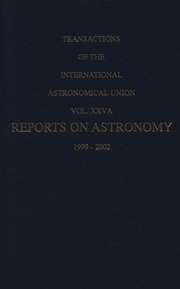No CrossRef data available.
Article contents
Small Radio Telescopes for Education
Published online by Cambridge University Press: 25 April 2016
Abstract
Core share and HTML view are not available for this content. However, as you have access to this content, a full PDF is available via the ‘Save PDF’ action button.
We present small radio telescopes consisting of commercial instruments for satellite TV reception. With these radio telescopes we can observe the 12 GHz emissions from the quiet sun and solar flares. Since microwaves occurring in our environment, e.g., those from a building and a fluorescent lamp, are also detectable, such radio telescopes are useful not only for radio astronomy education but also for physics education.
- Type
- Section 5: Small Telescopes or Internet Access?
- Information
- Copyright
- Copyright © Astronomical Society of Pacific 2001
References
Kruger, A., 1979, Introduction to Solar Radio Astronomy and Radio Physics, Reidel, Dordrecht, The Netherlands.CrossRefGoogle Scholar


